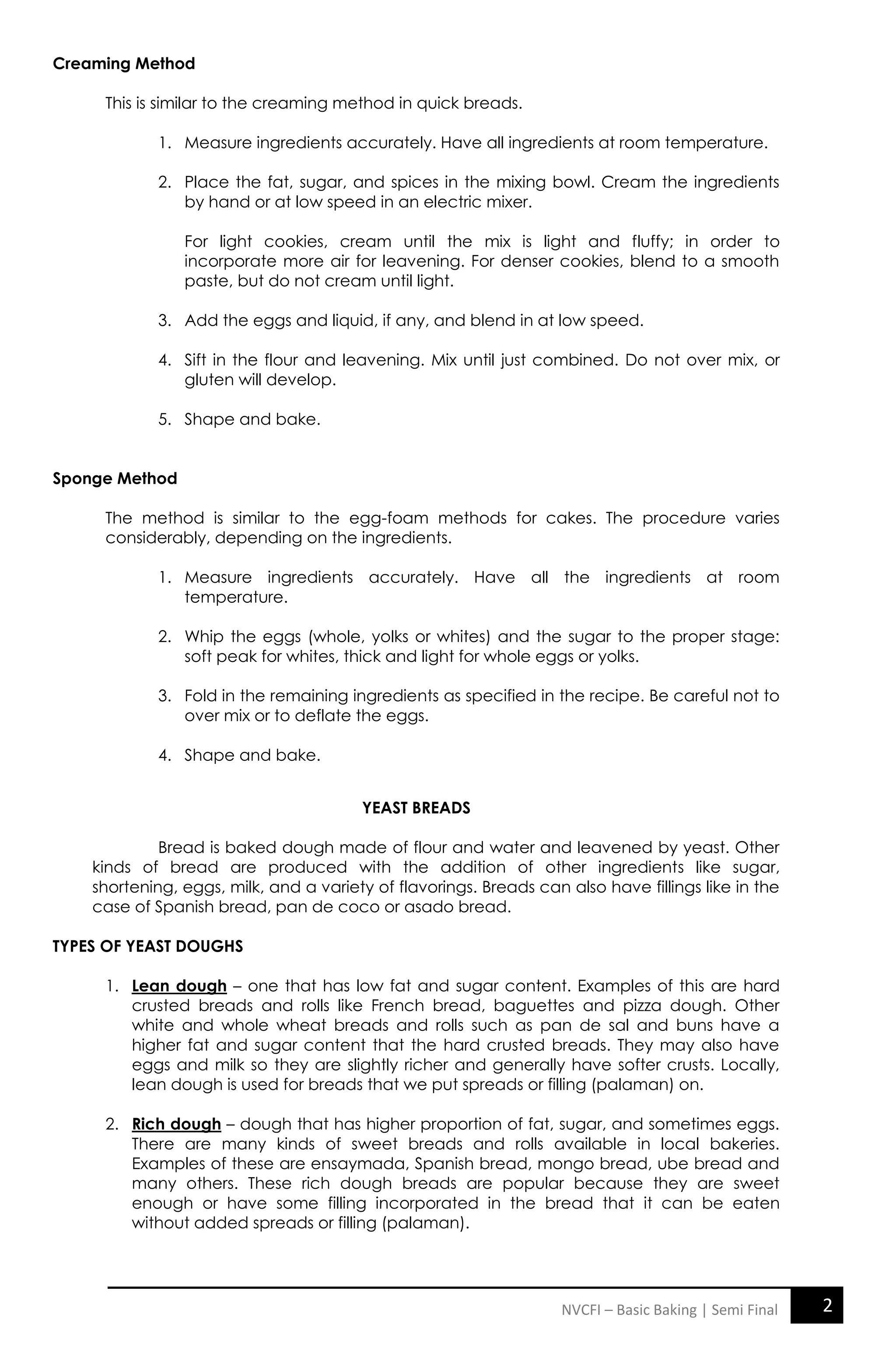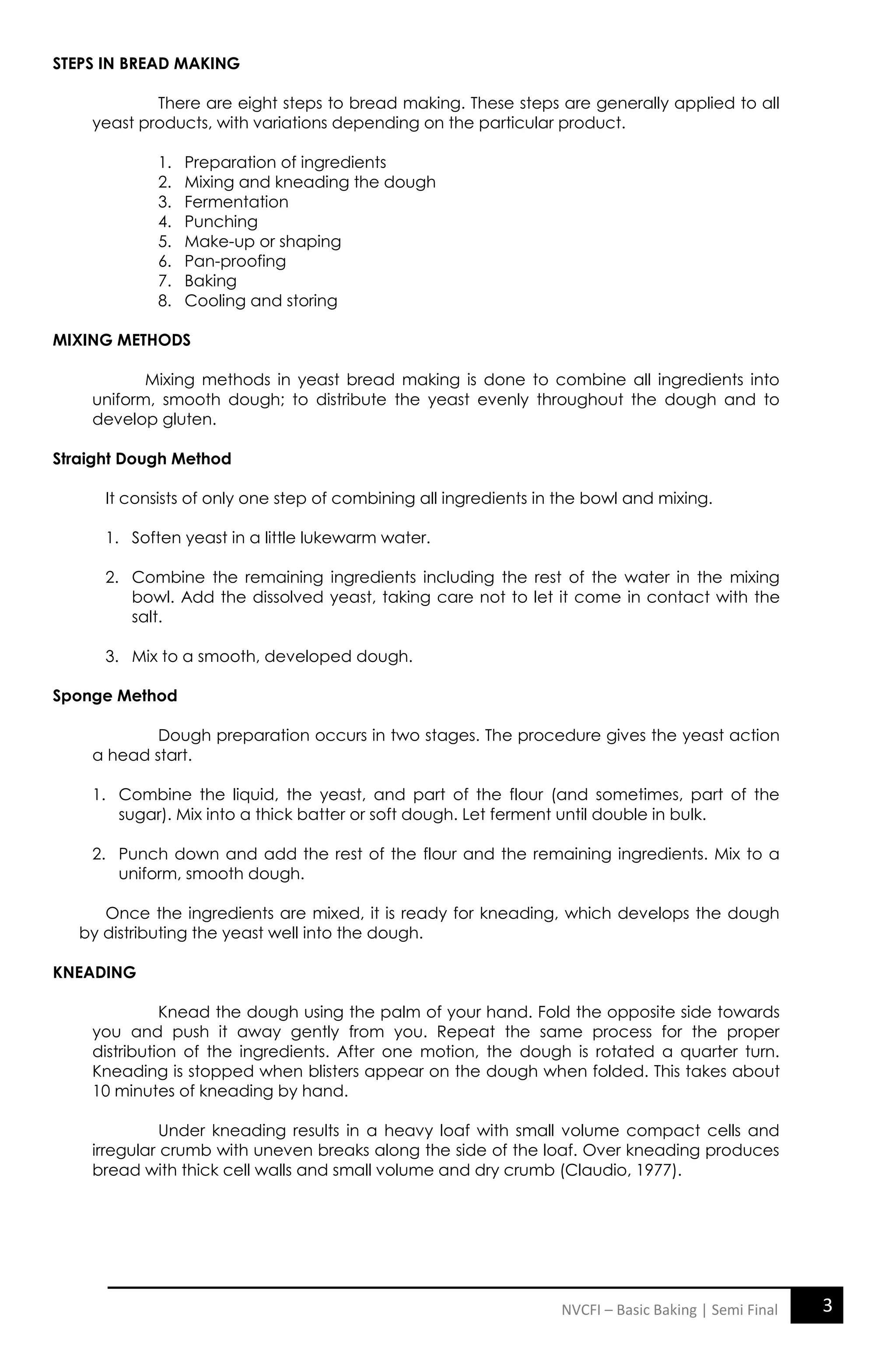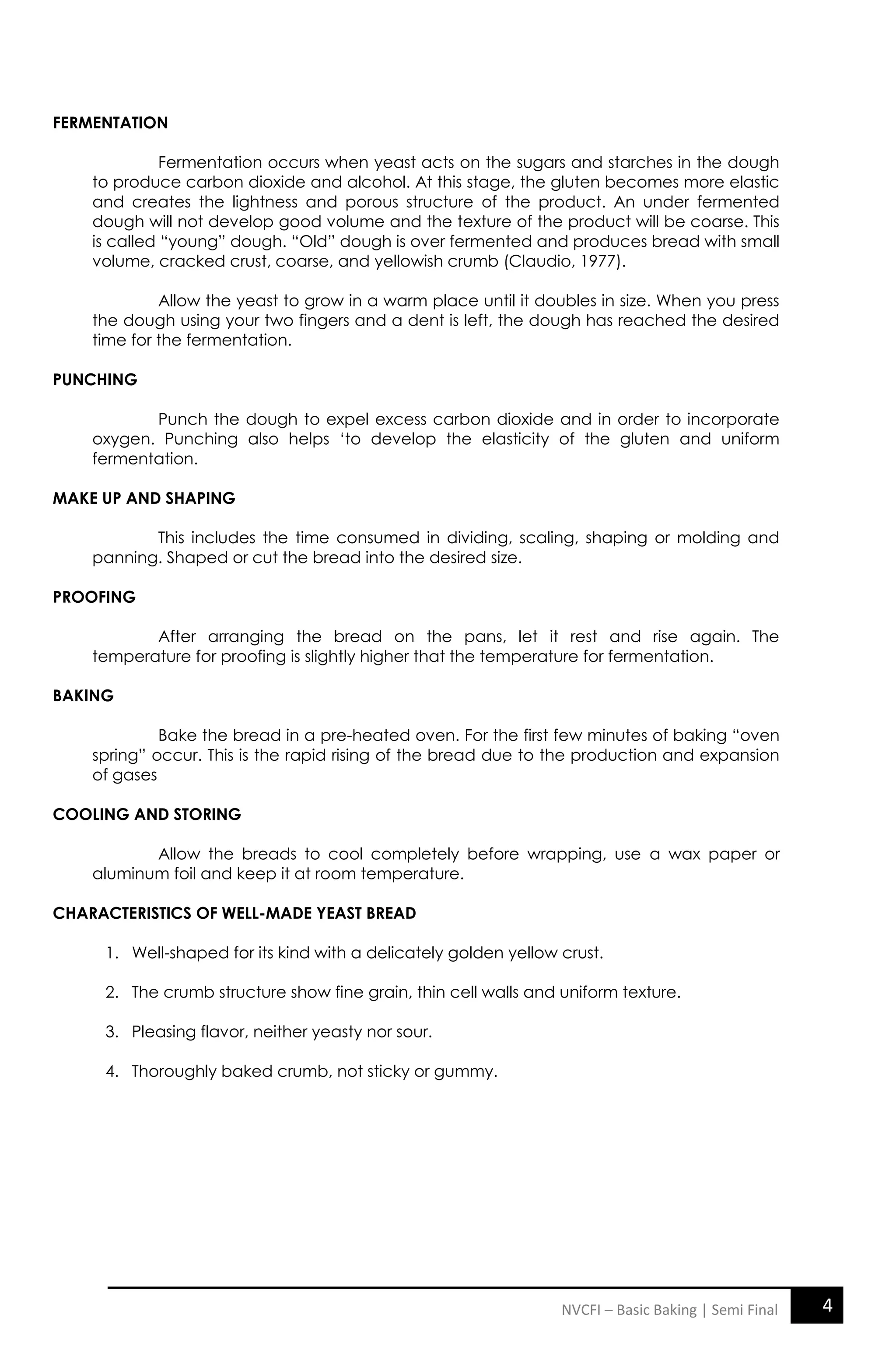1. The document discusses different types of cookies such as pressed, dropped, rolled, molded, icebox/refrigerator, and sheet cookies. It also covers three mixing methods for cookies: one-stage, creaming, and sponge.
2. The document also covers basics of yeast breads including types of dough, the eight steps of bread making, and mixing methods like the straight dough and sponge methods. It discusses kneading, fermentation, punching, shaping, proofing, baking, and cooling bread.
3. Characteristics of well-made yeast bread are given as having a delicately golden crust, fine-grained crumb structure, uniform texture, pleasing flavor that is



